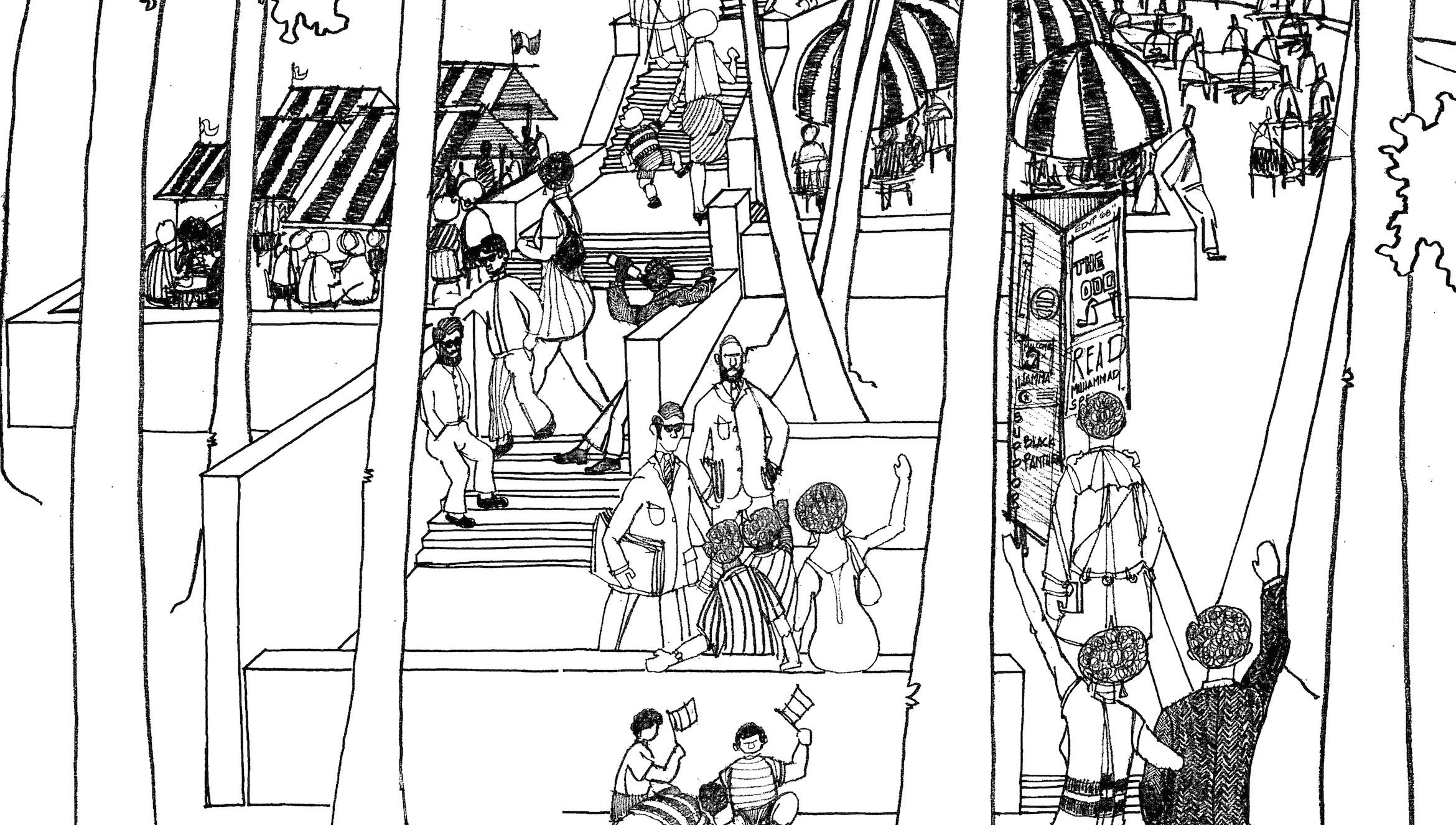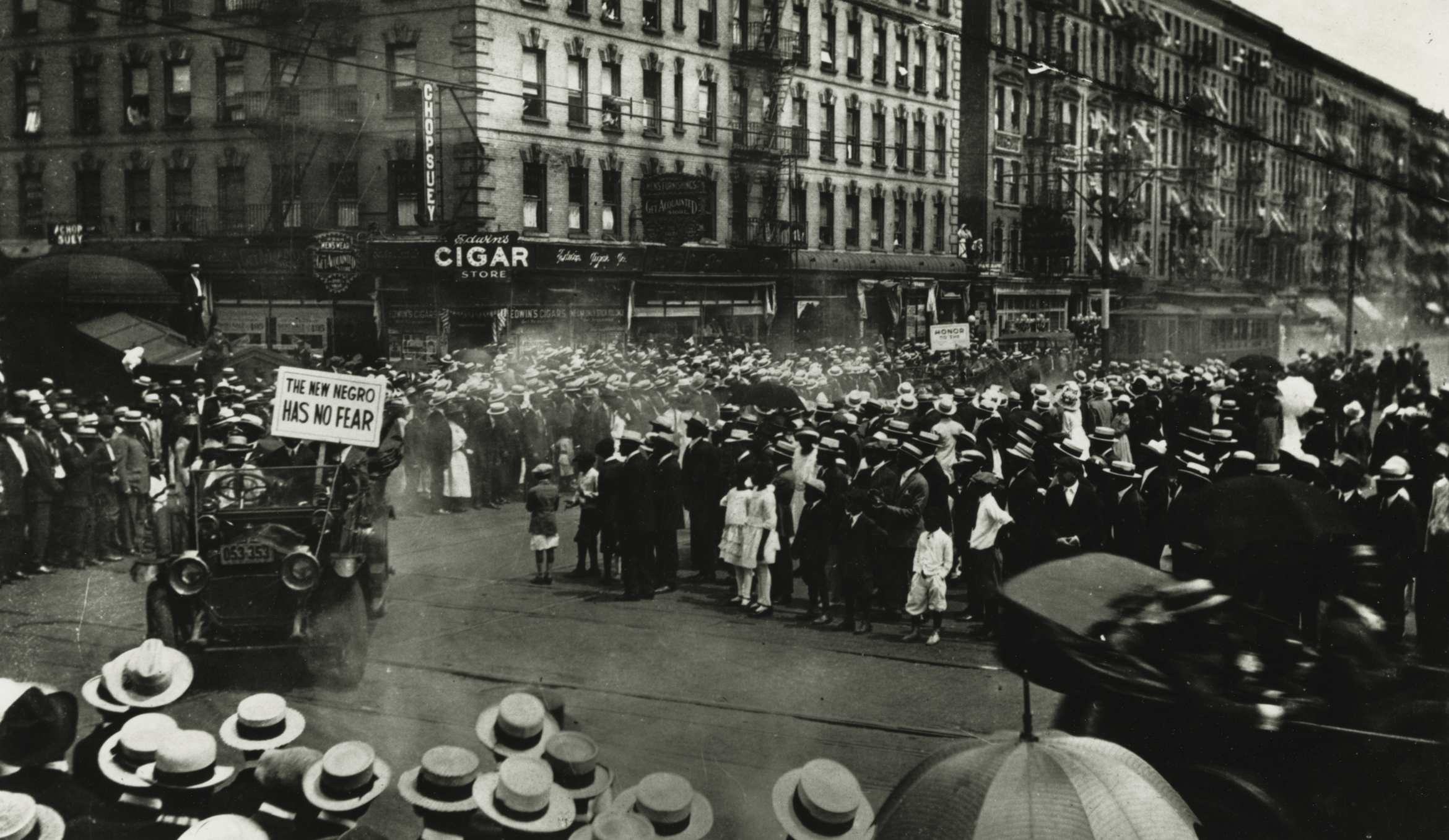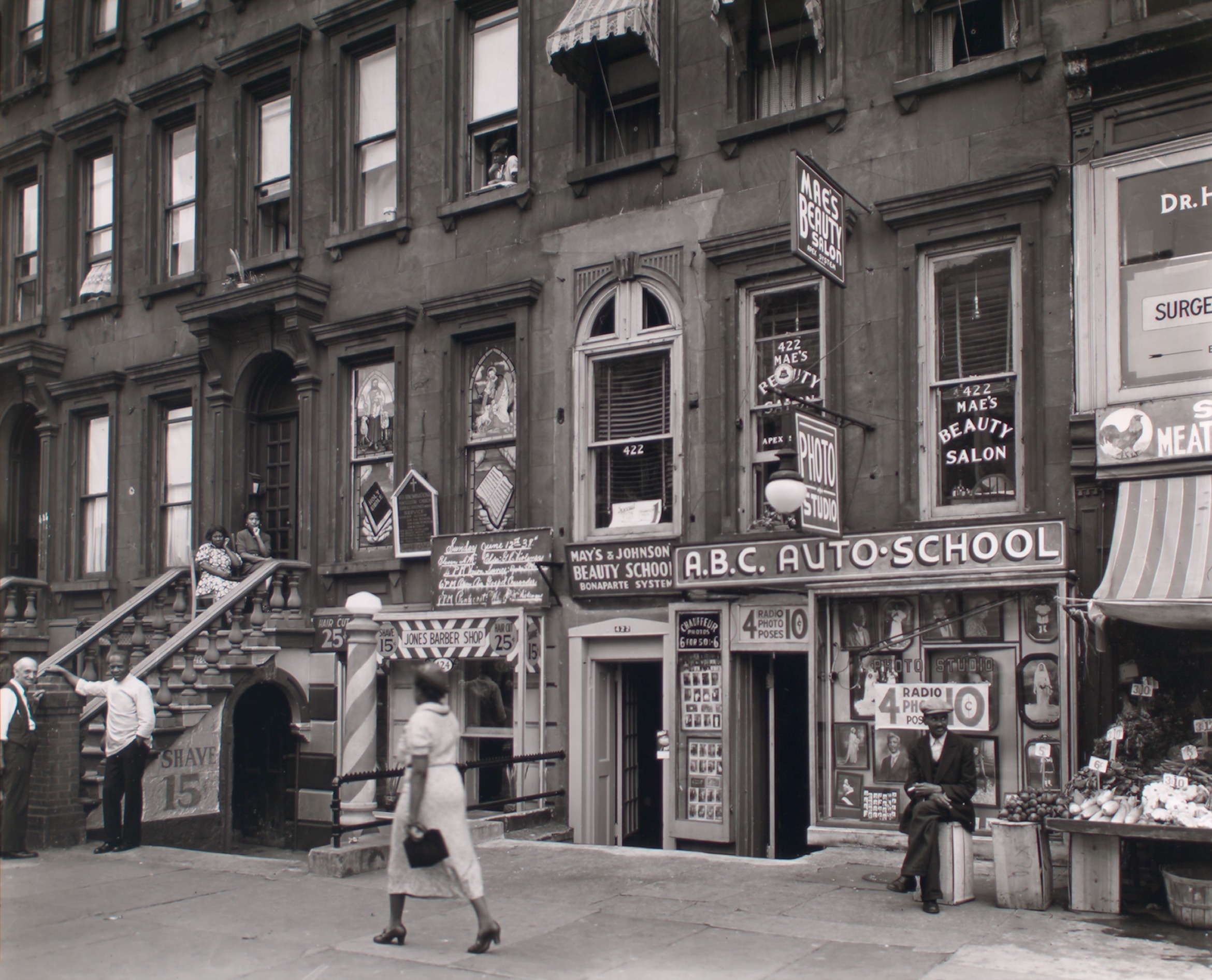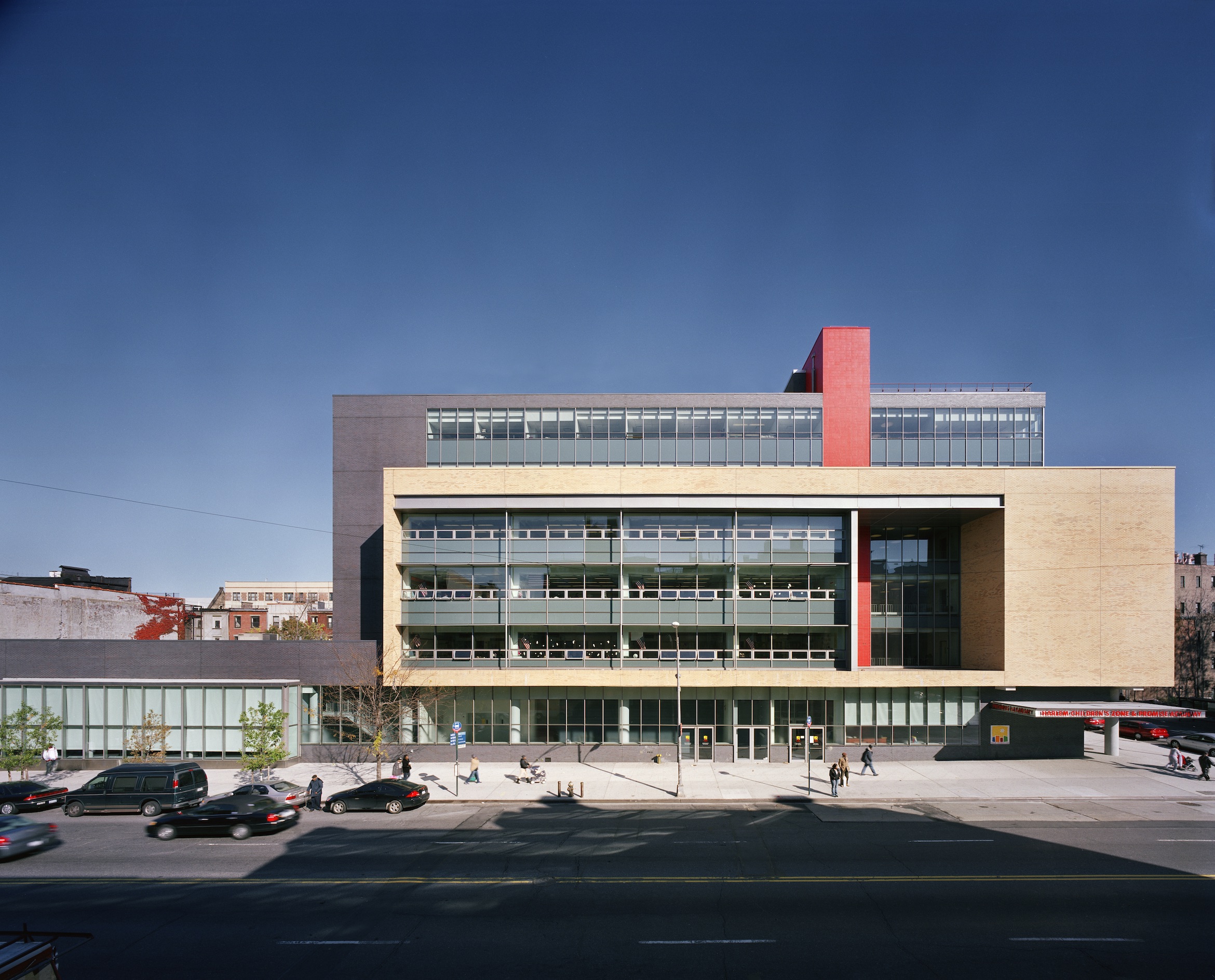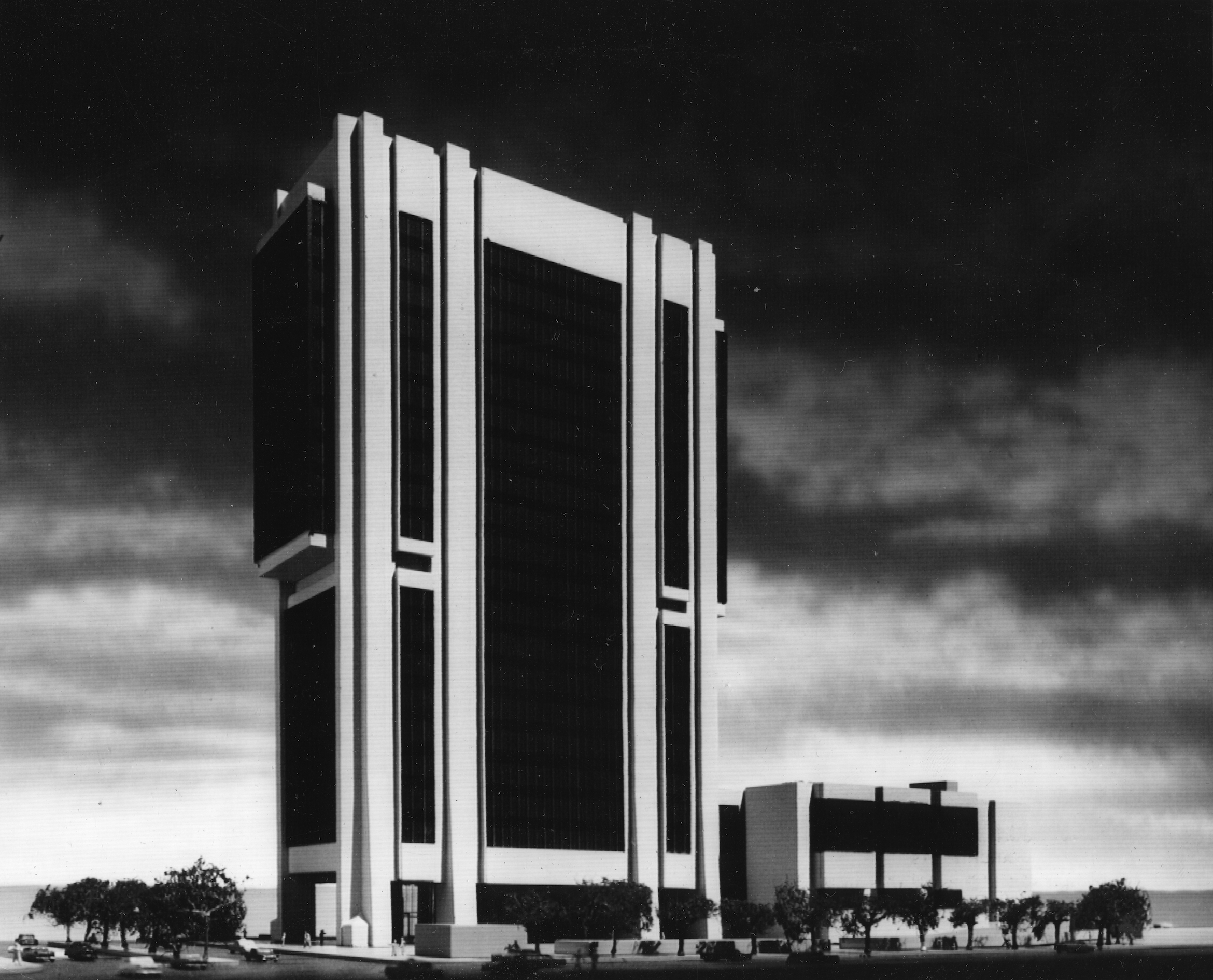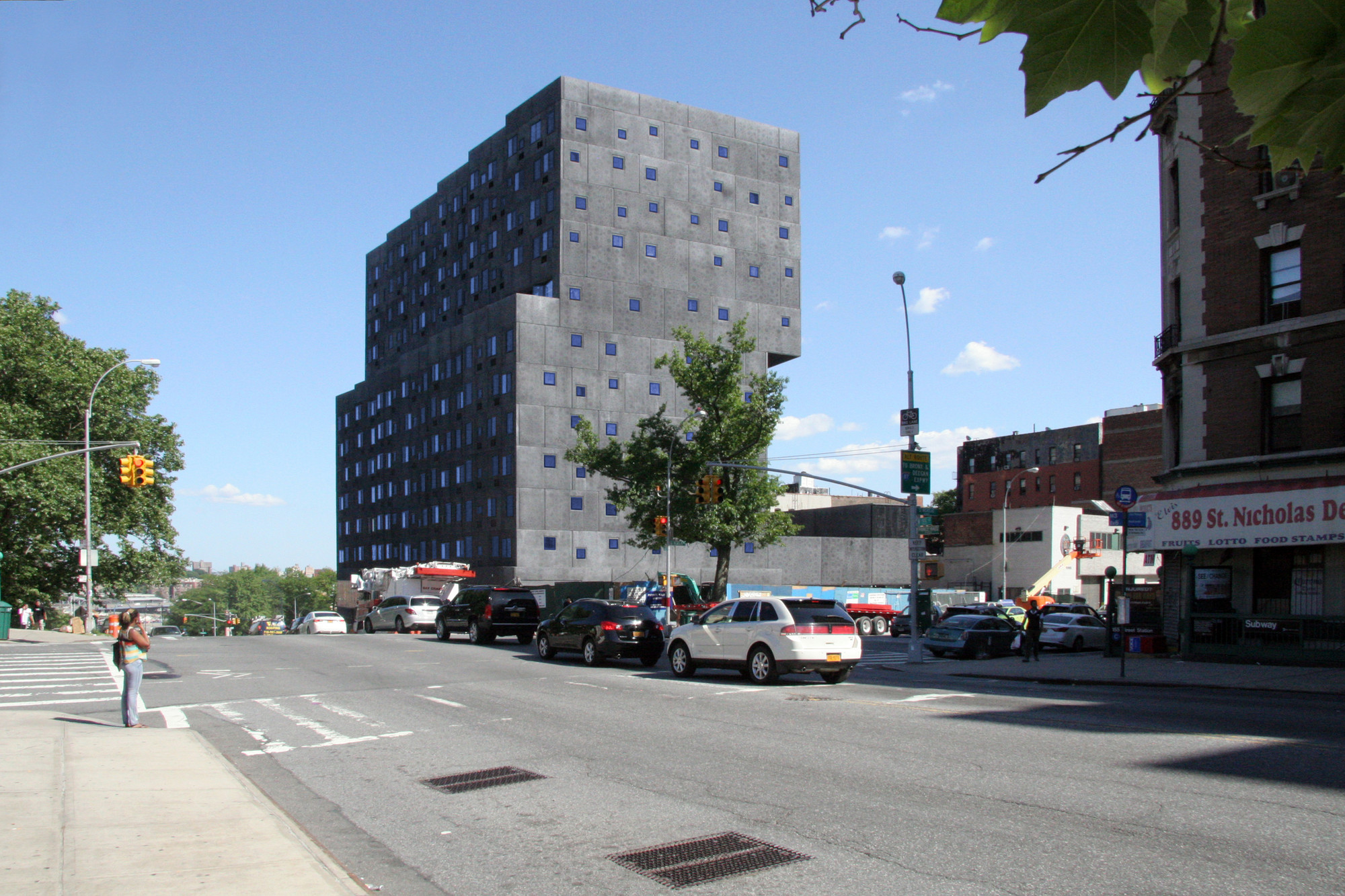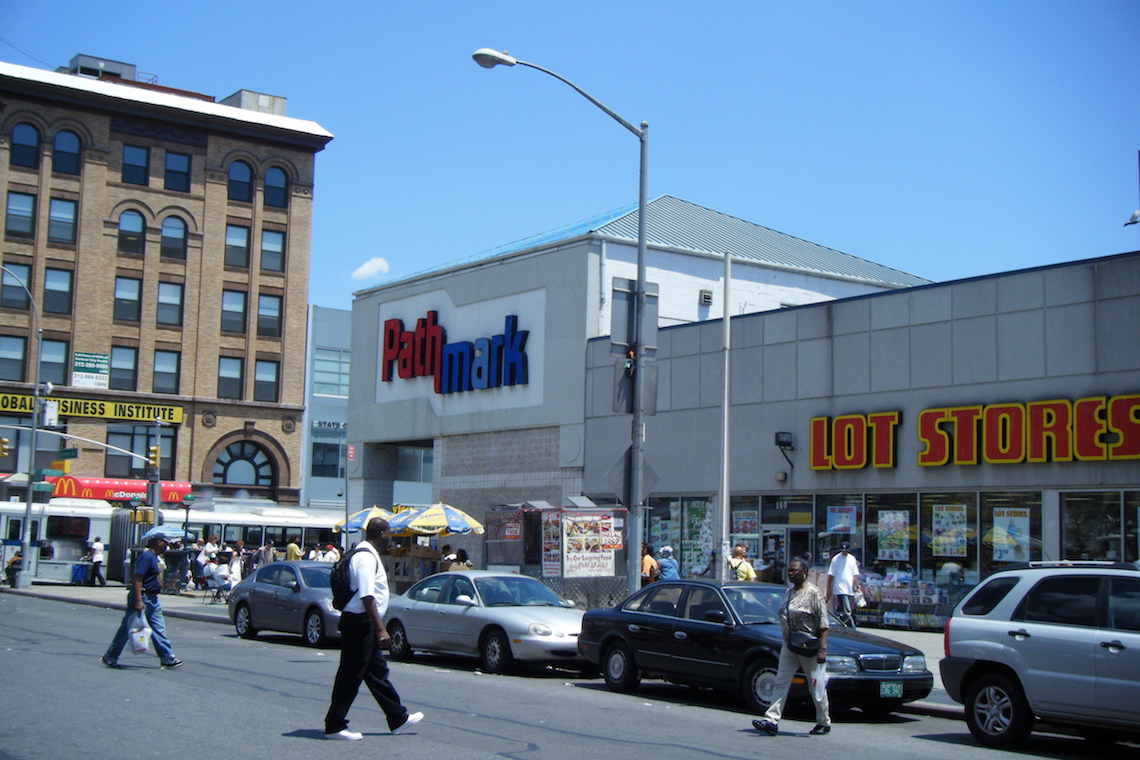
We are celebrating 15 years — and counting — of stories that are deeply researched and deeply felt, that build a historical record of what the city has been.
We are celebrating 15 years — and counting — of stories that are deeply researched and deeply felt, that build a historical record of what the city has been.
The debate about the significance and the future of Harlem has a long history, and it continues apace in 2017. As more white, foreign-born, and wealthy people make Harlem their home, the story of a neighborhood renaissance is matched by a lament for “the end of Black Harlem.” This summer, as Columbia University inaugurated a new Manhattanville campus and Whole Foods opened a store on 125th Street, architect and planner Maxine Griffith and historian Brian Goldstein sat down to take the long view on who makes Harlem, and for whom.
Griffith’s personal and professional history in Harlem, which she details in Columbia in Manhattanville, stretches from childhood through her work at the US Department of Housing and Urban Development (HUD), the New York City Planning Commission, and Columbia. In his new book The Roots of Urban Renaissance, Goldstein finds the origins of the neighborhood’s gentrification in a history of visions for its self-determination. Below, Griffith and Goldstein discuss Harlem’s appeal to insiders and newcomers, the role of architects and architecture in its transformation, and whether it is possible to have integration and self-determination at the same place and time.
There was a piece in the New York Times yesterday about this effort by real estate to rebrand the area between 110th and 125th Street as SoHa, which I’m sure you’ve heard about…
Yeah, I signed a petition against that.
It’s been around for a little while but it burst forth last week. But it isn’t just a July 2017 story; it comes to a much longer history about the way that people have thought and rethought of Harlem.
I was thinking about my uncle. He was from Barbados and came to New York, maybe in 1911. I remember him telling me that only white people lived in Harlem then. When I was in college and becoming conscious of the significance of Harlem, he would say, “Harlem? What’s Harlem? When I came to the States, Black people lived around where Penn Station and Macy’s is now, and they moved us because they wanted to build Penn Station and Macy’s.” So if you take the long view, Harlem is really the idea of an African-American seat of culture, arts, and learning that’s been attached to this geography.
As to where it’s going — in my view it’s part of a larger picture. When I moved to Park Slope in the 1980s, I was considered a yuppie pushing the real Irish- and Italian-American residents out. Harlem is an icon for a lot of reasons, but the world is gripped by this question of how do you have a vibrant mixed-income and racially-diverse community, without things tipping so that the people who live there now can’t live there in the future.
Does the neighborhood always change? What about Harlem as a white place, as your uncle said? I think to some people that’s a justification: History is used to say, “Well, New York’s neighborhoods have never been stable, so, this is Harlem’s latest phase. It was Jewish and Italian and Irish, then it was African-American, now it’s something else.”
Don’t you think there’s a deeper question, having to do with power, here? I think place is important, geography’s important, people’s memories and what they hand down are important. But that has to also be balanced with the importance of political power and economic power. It’s an interesting thought experiment: What would happen if everybody in Harlem were rich? What choices would they make?
If you talk to the average person walking down the street in Harlem and ask what it is they need, how would they use that power if they had it — they would probably say, good schools, a better place to live, better jobs, maybe college for the kids. So the question is: Do these conversations around Harlem lead people to that? I think in Harlem there’s a dialogue between the idea of radical activism and more traditional political power in answering the pragmatic question: How can we get what we want out of America?”
There are several layers — one is literal political power. If you have a predominantly Jewish or predominantly African-American or predominantly Latino neighborhood, their political representatives tend to be African-American or Jewish or Latino and that simply has a foothold in the way that politics works.
But Harlem was also a place created through a process of segregation, and as a result of that it became a majority-minority community, and for a lot of people who lived there that took on a greater importance. In a city where a lot of people didn’t have input, they had this territory in which they were able to make decisions. I think that’s one reason why something like the rebranding has a different meaning there, because it means taking away some of that potency.
This is the major debate and transformation I write about, which began decades ago: about the means of achieving “community control” and the very meaning of the term. In the 1960s and early 1970s, Harlem had groups like the Architects’ Renewal Committee in Harlem, or ARCH, an integrated and then black-led organization of activist architects and planners. With the design hand of figures like Max Bond, they offered the pretty radical idea that a community-controlled Harlem meant a place built by and for its largely black, often low-income residents — a place built upon what they saw as the authenticity of the street, sidewalk, and stoop. They saw those residents and their urban fabric as already enough. Harlem didn’t need outsiders.
On the other hand, the kinds of community groups who succeeded groups like ARCH in the 1970s, 1980s, and 1990s, increasingly saw their role as one of economic integration, both by bringing new residents into Harlem and bringing Harlem into economic markets beyond its borders. Community development corporations like the Harlem Commonwealth Council and the Abyssinian Development Corporation offered the more “pragmatic” approach you mention, drawing on outside resources, both public and private, where they could find them, and building big projects like shopping centers. For them, the “community” in community control was perhaps broader but also more susceptible to outside influence. These were very different approaches to power and politics and how those should take physical form.
These were important organizations and people because they spoke standard English and could write eloquently and sit across the table from primarily white elected officials. The political actors were always documented — that was all out in the sunlight, and there were hearings and reports — but as you show in your book, this other stream of folks also interacted with the power structure, whether against or pragmatically within the power structure. They were unsung outside of the block associations and local organizations.
As neighborhoods change, people always want to know who is responsible. Who has driven the changes that have shaped and are shaping Harlem? Activists and residents tend to point to real estate and real estate brokers, or they might point to politicians. But it’s a much more complicated story. Neighbors might have very different views on where Harlem should go, or there might be actors like Columbia University that aren’t governmental or community per se, but which operate between and try to negotiate for different interests.
Columbia’s not a community development organization, and is fairly focused on the mission of teaching, scholarship, and research. Obviously it has an impact, which is why there are community benefits agreements and why there were years of negotiations; but unlike community development corporations or the Harlem Chamber of Commerce or the Department of City Planning, I don’t know that Columbia’s objective is to mold Harlem neighborhoods to a specific vision.
A lot of people talk about “Harlem” — and I’ve been doing that too in this conversation — and it’s really annoying because Harlem is the size of, I don’t know, Cleveland? There are dozens of very distinct neighborhoods. I think you’d find a really different focus depending on whether you’re talking about Manhattanville or East Harlem or Central Harlem.
How do you find the right path for this place and its many places, and who gets to decide that? How does one navigate a neighborhood that has a lot of constituencies and a lot of people who love it? Even many recent residents came to Harlem because they have affection for it, it’s not just because they found a good deal on an apartment.
To the question of who made Harlem, it’s never one group. I don’t think you’re really saying that it was these activists who made Harlem. They were part of the dialogue.
It may be useful, in the abstract, to pose a question like, “Who?” But, on the ground, the answer ends up being, “It depends, and everybody.” Who has the greatest stake, who has the loudest voice, who’s the best organized, who has the most money, who’s the cousin of the elected official, who has the best looking drawings, who can speak the best at a community meeting.
I don’t find it that different from any place else. What’s different about Harlem is that there is this interest in preserving the legacy.
By 1980, Bedford-Stuyvesant had become a larger African-American community than Harlem, whose overall population was half of what it was in the 1920s, the era of the Harlem Renaissance. Harlem no longer had the most concentrated population of African-American New Yorkers, but in all the time since, it never stopped having that larger metaphorical and symbolic meaning.
My family took the A train from Harlem to Brooklyn to be able to own a bigger house, and be near parks — and my mother thought that Harlem was a little “fast,” in her words, to raise a family — but we would always go back to Harlem for the celebratory events. Harlem had the writers and the poets and the artists. I have a friend who taught the Harlem Renaissance at the Sorbonne. He had never been to Harlem, but he read all the books of the Harlem Renaissance while growing up in Niger. The ability to project that imagery beyond the borders of the geography was tremendously important, and I think it’s why there’s hope to continue the legacy.
Then there’s the physical reality. Many of the activists you write about, including Max Bond, fought to keep the granularity of the physical. The brownstones, a small piece of Harlem that people could own, became really important. It was the family in public housing who could buy a brownstone for a dollar through a city program, who had a cousin who was an electrician, and a grandfather who could do a little plumbing. That kind of thing was only possible because of that granular scale, because of these beautiful buildings, with these wonderful bones that could stand up to renovation.
It’s worth talking about architecture itself, not just as a magnet, but in terms of the people who participated in shaping it. That’s one of the ways that African-Americans very notably shaped the built environment that they lived in: not through indirect influence, but by literally deciding where the bricks go.
Architects and planners who thought in terms of urban design had a lot of the most ambitious dreams for the neighborhood. Some of them, like Max Bond or Kenneth Simmons, did come from outside the neighborhood, but it was a place that they identified with in special ways. There’s certainly people, going back all the way to African-American architect, Vertner Tandy, and the Renaissance era, and today to people like Roberta Washington and David Adjaye, who had that imprint. You see that in buildings like early churches, like St. Philip’s Episcopal Church, or Max Bond’s Harlem Children’s Zone, as a later example. Those kinds of actors are often unheralded, but they’ve been there all along. They’re often members of the black middle class, they have some elite status, or a kind of autonomy different from other community actors.
The part of your book that interested me the most was the debate around construction of a new state office building on 125th Street in the late 1960s. Officials and moderates supported the redevelopment project, and radical activists, often younger people, opposed it. Whatever you have to say about that building, it’s not going to go down in the annals of architecture as a brilliant piece of work. Often, African-American architects were brought in after some controversy, but the building they designed was not the building that was built, because budgets were cut and design decisions overruled. This sounds like a really mundane kind of thing; people think if you’re a really good architect you should be able to work your way around that. But it’s really difficult to build a $100 million building with $50 million.
The state office building is a really good example where a fine designer wasn’t enough. Ultimately, the fact that it was a designed by a prominent African-American-led architecture firm, Ifill Johnson Hanchard, didn’t overcome the frustrations that the radicals in Harlem had with what it meant as a project. They didn’t see it as a building by black people but as an outside imposition — another example of officials and elites telling Harlem what it should look like and what it needed. It’s something you see even today, with the new affordable housing in Sugar Hill. David Adjaye is a wonderful architect, but the building definitely has many neighborhood critics.
In 2001, many years after ARCH ceased to exist, Max Bond spoke at an event on urban development in Harlem, as it was starting to change quickly. He described his ambition that Harlem should be an economically diverse place. In his mind, a neighborhood with many different types of people would be ideal. But Bond’s understanding of real estate, land, and ownership was a lot more radical and experimental than the view typical of Abyssinian Development Corporation and other community development corporations. Bond’s vision was premised on a bottom-up process, and he would pursue integration only after first taking care of Harlem’s longstanding residents. Meanwhile Abyssinian’s pastor, Calvin Butts, channeled outside resources toward the goal of integration, helping to sort of smooth the path for real estate investment, and targeted new middle-class residents early on.
The question of ownership is part of this ongoing discussion about what is being preserved and not preserved, what neighborhoods are being called or not called. A lot of the actors in the 1960s saw it as a moment of what we might call separatism, but really it was about finding ways for black people to own the land that they lived on, which they hadn’t ever really been able to do on a large scale, even in Harlem.
Again, you raise the issue of there being multiple Harlems; there’s always been a black middle-class, what my mother called the “doctor-dentist” folks, who have been in their brownstones for generations, and are not selling to anybody. The City in the early 1980s owned 65 percent of Harlem’s housing and 35 percent because of “in rem” takings, and there was a program trying to get those buildings into the hands of indigenous folks.
Keeping people in the housing they own, and more importantly stabilizing public housing, that’s the key. When I was at the Department of Housing and Urban Development (HUD), we used to bring people to New York City and they would just walk around open-mouthed looking at the public housing a block away from luxury housing. Especially in Manhattan, it’s part of the mitigation or dampening of gentrification’s pressures.
It does often seem that the most expeditious path to neighborhood integration is what we would call gentrification. It’s not like people in extremely affluent neighborhoods have shown a lot of tolerance for low-income housing construction in their midst.
My sense is there are a lot of people who, although they may not want to live in a slum, would be very interested in living in economically and racially integrated neighborhoods and don’t want to live in isolated neighborhoods.
If the issue is whether brownstoners in Harlem, old and new residents, black and white residents, could tolerate low-income housing near them, I would say yes, they already do. If you go to Dinosaur Barbecue on 125th Street on a Sunday, you see fancy brownstone people and you see people from Grant and Manhattanville houses and workers who’ve worked on the Columbia buildings in the middle of the week and liked the food and bring their families back.
There is a moment where you see this remarkable diversity in a place like Dinosaur Barbecue, but then does it reach a tipping point? Or can it reach a stable state, and if so, what kind of state does it reach?
It’s almost like a chemical reaction. And that’s what the planners and architects and city officials I know are trying to figure out. Nobody I know wants to live next to abandoned buildings, to have to get on the subway to go to a supermarket, or to have to trudge through the snow because they can’t get it removed, because they live on a block with no political or economic power.
A Starbucks opened up near the new Columbia campus. I was talking to a friend who lives nearby in public housing, and he said, jokingly, “Yeah! Now I can get my soy Frappuccino, I don’t have to go downtown.” But then he said, “What’s next?” That’s the question. Part of the answer would be to make sure that affordable housing and low-income housing is always part of the mix in Harlem. And I think it has to be really great housing. There was somebody at a conference I attended, during a conversation about affordable housing, who got up and said, “Don’t forget, Black people like beautiful things too!” I think that’s one of the answers for Harlem. And I think it has to be planned. Where we are now seems kind of okay, but it’s like turning on the spigot to fill a backyard pool, and the next thing you know the whole neighborhood’s floating away.
Something like a shopping mall, a supermarket, an office building — those can certainly be seen as gentrification signifiers, but in a lot of cases they also serve needs of Harlemites of many different stripes, and express the idea that you can buy broccoli in your neighborhood, or a CD of your favorite musician, or clothing for your kids, without having to take the subway.
And cheaper than shopping at some of the local places. But some of the ways these projects are seen to benefit the local communities are jobs. The construction jobs that result from development may only last a few years, but hopefully there are permanent jobs as well.
The Whole Foods on 125th Street is symbolic because it is going to become the largest grocery store there; the Pathmark at 125th and Lexington closed in 2015. That for me does represent some real trade-offs, and maybe a tipping point. When Abyssinian Development Corporation developed the Pathmark with the Community Association of the East Harlem Triangle in the 1990s, it was a great watershed because it meant that Harlemites had a real supermarket. So when Abyssinian sold it to a developer, neighbors understandably worried about where they could do affordable shopping.
There’s a lot of people who argued against the Pathmark. There are a lot of small vendors, small grocers, bodegas, who said, “No big supermarkets.” Now the Pathmark is held up as the model, so it’s all iterative.
Sure, but it’s all negotiation. You hope for a negotiation in the first place and then you hope for an inclusive negotiation.
Exactly, you hope for a real representative democracy. Whether it’s a heartfelt objective or it’s just because people want to get reelected, you hope that our elected officials, our appointed officials, our community leadership, the big institutions, are all working towards that.
You write about how many of the plans for Manhattanville happened, were completed, but never actually realized. They appear and then disappear many times over.
Around 1984 I got a job at the Department of City Planning as the deputy director of City Planning and Housing Policy. There was a lot of dialogue around community development across the city but not a lot coming out of Harlem. During that time, what’s now called the Greater Harlem Chamber and Congressman Charles Rangel had focused on this area of Manhattanville where the meat markets were leaving. I was involved in one plan called “Harlem on the Hudson,” and then when I came back from working for HUD I was involved in another one, led by the community board. There were lots of great ideas, but very little happened, because of course this isn’t Russia in the 1950s — it’s not a planned economy, it’s almost impossible to tell the market what to do. At the time the only folks to step up to the plate were luxury housing people.
Then when I was approached by Columbia about Manhattanville, I thought maybe a university, especially one that had gone through what Columbia had gone through in 1968, would know it had to be especially sensitive building there. My background was clear; if they were hiring me, it meant they were going to engage with the community. I asked Max Bond, “Do you think these folks are righteous? I mean obviously they have an agenda, they have objectives, but do you think this is an honest group of people?” And he told me to take the job.
Friends downtown would say, “You’re redeveloping Harlem, but how can you do that?” And I said, “Do you mean how can I tear down all the brownstones with the little girls with pigtails jumping rope? It’s not there. It’s zoned industrial, there are gas stations and storage buildings.” It seemed like an opportunity for the university and the community to heal the breach in a way that could be beneficial, certainly to the contiguous communities of West Harlem.
That’s what we tried to do through the community benefits agreement and also through the design of the first floor of the buildings: there’s a black box theater, an art gallery, and on the first floor of the Greene Center, an education center, as well as a clinic. All those things came out of this really robust and challenging dialogue that’s still going on with the community.
What do you think your uncle would say if he saw Manhattanville today?
He’d probably say, “You mean Black people are still the majority in Harlem?” Especially coming from the Caribbean, it’s that immigrant view that picking up and moving on and moving to a better situation is important. So he would probably be surprised that we were still planting a flag in Harlem. But let me ask you a question: What do you think the future holds?
A lot of the fear people have is not unjustified, but I wouldn’t say it’s limited to Harlem. Gentrification is not just a story of those who are in the neighborhood and those who are outside of it, or those who are residents and those who are invaders. That’s overly simplistic, and there are instances where that kind of change can be productive. There’s a good case to be made that this is a moment when there are a lot of things in balance. But it’s hard to imagine a way that prices don’t rise so much that at some point soon Harlem experiences the downside of that.
I guess my optimism lies in the idea of a self-motivating decision-making. Not decision-making by outsiders, but that Black and Brown people will end up with a kind of power, political and economic, where we can make our own choices.
The views expressed here are those of the authors only and do not reflect the position of The Architectural League of New York.
